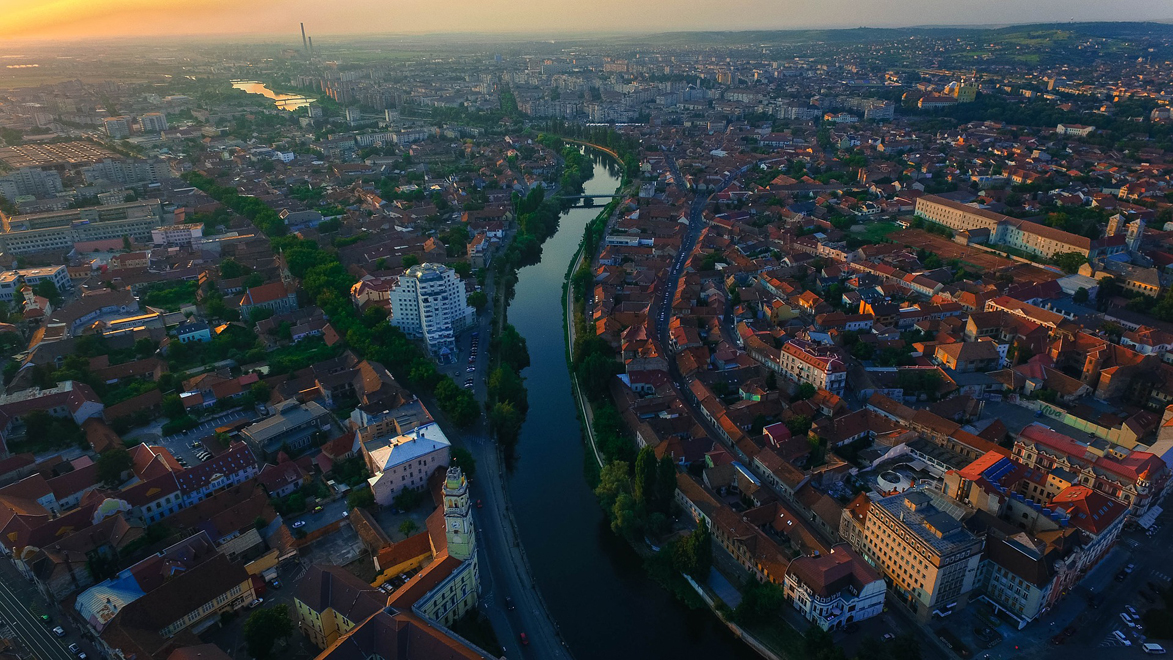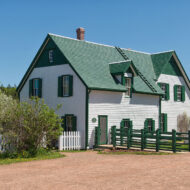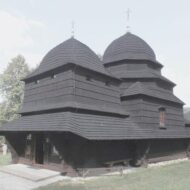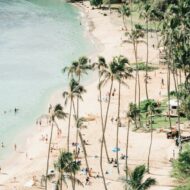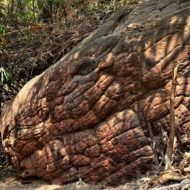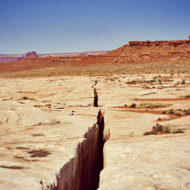Oradea is a city in the far northwest of Romania, not far from the border with Hungary. Oradea is located on the eastern edge of the Great Hungarian Plain on the River Crișul Repede.
The city center is 13 km from the Hungarian border. The foothills of the Apuseni Mountains end on the northeast edge of the city. The castle and thus also the city are strategically located at the opening of the Kreisch Valley into the Great Hungarian Plain at an average height of 126 m. The river flows almost centrally through the city. The train station is north of the Schnellen Kreisch, the castle on the south bank.
Oradea was first mentioned in Latin as Varadinum in 1113. The Oradea Fortress, the ruins of which are still there today, was first mentioned in 1241 as a hasty repair and reinforcement began. Mongol-Tartar attack on the city. But it was not until the 16th century that the city began to grow as an urban center. In 1700, the Viennese engineer Franz Anton Hillebrandt made a plan of the city in Baroque style and, starting from 1752, many notable places were built such as the Catholic Cathedral and the archbishop’s palace and the Museum of the Land of Christ.
According to the Trianon Treaty, after the First World War, Oradea passed to Romania. During the Second World War, Hungary captured Northern Transylvania, but the situation with the return was repeated in 1947, when the region again ceded to Romania through the Paris Peace.
According to the Trianon Treaty, after the First World War, Oradea passed to Romania. During the Second World War, Hungary captured Northern Transylvania, but the situation with the return was repeated in 1947, when the region again ceded to Romania through the Paris Peace.
Oradea has been the commercial and cultural center of Western Romania for hundreds of years. The current architecture of Oradea is a mixture of Communist-era apartment buildings, mainly in the suburbs, and the beautiful historic buildings that are remnants of the time when the city belonged to Austria-Hungary empire. In addition to the many Baroque buildings, Oradea is distinguished for a particularly rich collection of Art Nouveau architecture.
Oradea plays an important tourist role in Romania because it is close to two of the most famous spas in the country, Băile Felix and Băile 1er mai, located in the municipality of Sânmartin a few kilometers south of the city. The sights of Oradei are almost all in the center, so the tour will take a maximum of 3-4 hours.
Oradea plays an important tourist role in Romania because it is close to two of the most famous spas in the country, Băile Felix and Băile 1er mai, located in the municipality of Sânmartin a few kilometers south of the city. The sights of Oradei are almost all in the center, so the tour will take a maximum of 3-4 hours.
Access : Coordinates:47.072222, 21.921111 / Oradea is on the European route E 60, which leads here from the Hungarian capital Budapest. It is a good 500 km from Vienna, which takes around 5½ hours of pure travel time.
/ Oradea is an important railway junction in the west of the country which is united by the Intercity of Romanian Railways to the cities of Timișoara, Cluj-Napoca, Brașov, Arad, Ploiești and Constanța. Oradea is the terminus of the masterful 300 Bucharest-Oradea. It is also located on the international lines Brașov-Budapest and Cluj-Napoca-Budapest.The city has four stations.
/ Orada has its own airport with several airlines flying from. Including low-cost airline Ryanair. It flies to Bergamo (Italy), Girona (Spain) and Memmingen (Germany).
/ Public transport in Orada is poorly developed: there are a couple of tram and bus routes. But tourists don’t really need it, all interesting places can be reached on foot. There are both single tickets (5 lei) and daily tickets (13 lei). Parking in the city center is paid. 1 hour – 2.6 lei. You don’t have to pay on Saturday and Sunday.
Highlights :
- The main square of Oradea is called the Piața Unirii. In the center there is a monument to the Lord of Wallachia, Mikhail the Brave , who at the end of the 16th century was able to briefly unite three principalities: Wallachia, Transylvania and Moldavia.
- City Hall (Palatul Primăriei), Piața Unirii, no. 1 : Magnificent eclectic administrative building with predominantly classicistic elements. It was built in 1902/03 based on a design by Rimanóczy Kálmán Junior.
- Baroque palace : Built according to plans by the Viennese architect Franz Anton Hillebrandt in the French Baroque style, one of the most extensive baroque buildings in Romania and all of Southeast Europe.
- Oradea Fortress (Cetatea Oradea) : The history of the fortress goes back to the 11th century. It played an important role in the Turkish wars. It received its current form at the end of the 17th century.
- Greek Catholic Episcopal Palace : built in the eclectic style with Romanesque and Byzantine elements and elaborate decoration.1903–1905.
- Former 14th county building : The originally Baroque building was probably built around 1728, the south wing was added in 1855.
- The Green Tree Inn (Hanul Arborele Verde) : Originally a baroque building ,erected in 1760, which initially served as an inn but also as an apartment and dungeon for the Catholic cathedral chapter.
- Șirul Canonicilor : An architecturally uniform complex, there are ten independent buildings that were built between 1753 and 1875 for the canons of the Catholic cathedral chapter of Großwardein.
- Palais Rhedey (Casa Rhedey) : Relatively simple, two-storey baroque building from the late 18th century, little is known about the history of its origins, so it is also unclear what relationship the eponymous Count Rhédey had to the building.
- Main train station : The listed station building in the historic style – it dominates neo-Romanesque and Gothic elements – was inaugurated in 1857 by Emperor Franz Josef I and his wife Elisabeth (“Sisi”). 1900-02 it was rebuilt and expanded in view of the increased city and the number of travelers.
- Rimanóczy Kálmán Sr. Palace (Palatul Rimanoczy Kálmán Sr.), Parcul Traian Street No. 1 : Art Nouveau palace built in 1905 and designed by Rimanóczy Junior for his father, influenced by the Venetian Gothic, the source of inspiration was apparently the Ca ’d’Oro palace in Venice.
- Palais Moskovits Adolf and Sons (Palatul Moskovits Adolf și fii), Str. Alecsandri Vasile 1 / corner of Piața Unirii, multi-family residential and commercial building in a comparatively sober Secession style from 1910/11.
- Former 18 Hotel and Spa Rimanóczy (Hotelul și Băile Rimanoczy) : Large and luxurious hotel building in eclectic style with classicist and renaissance elements, named after its builder and former owner Rimánoczy Kálmán Senior. It was built in two stages from 1892 to 1900. The hotel had a steam bath, and in his will Rimánoczy bequeathed it to the city to make it accessible as a public bath.
- Commercial Hall (Hala Comercială), Piața 1 Decembrie nr. 10. Imposing eclectic building (erected in 1893/94) with classicist and renaissance elements, impressive dome, today the University of Medicine and Pharmacy.
- Postpalast (Post Office Palace), Str. Roman Ciorogariu, no. 12 / Children’s Palace (Palatul Copiilor), St. Muzeului nr. 2 : Based on a design by Rimánoczy Kálmán sr. built for the Society for Archeology and History. The architecture is characterized by elements of the Renaissance and Classicism. Today it serves as a child and youth center.
- Real-Obergymnasium (Arhigimnaziul Real) : Representative school building from 1895/96 in the typical eclectic k.u.k. style / Cadet school (Scoala de Cadeti), Calea Armatei Române 1-A, eclectic representative building from 1897 with baroque and classicist elements, today houses the Museum of the Kreischgebiet (Muzeul Țării Crișurilor).
- Palace of Justice (Palatul de Justiție), Parcul Traian Street nr. 10 : Representative courthouse in eclectic style from 1897/98. / Palais Ullmann (Palatul Ullmann), Piața 1 Decembrie no. 9 : Built in 1913 for a wealthy Jewish entrepreneur family.
- State Theater “Regina Maria” (Teatrul de Stat “Regina Maria”), Pta Ferdinand, 4-6 : Magnificent theater building, built between 1899 and 1900 according to a classicist design by the Viennese architects Fellner & Helmer. There is a Romanian and a Hungarian branch.
- Financial Palace (Palatul Finanțelor), St. Republicii nr. 35 : Representative building that Rimánoczy Kálmán Junior designed in a mix of styles with predominantly Renaissance and Baroque elements and which was built in 1900.
- Psychiatric Clinic (Spitalul de neuropsihiatrie), Str. Louis Pasteur nr. 26 : Built in 1902/03 based on an eclectic design by Rimanóczy Kálmán Jr / Palais Rimanóczy Kálmán jun. (Palatul Rimanoczy Kálmán Jr : Eclectic representative building with Baroque influences, built in 1903 and named after its architect, today an Orthodox bishopric.
- Complex “Black Eagle” (Palatul “Vulturul Negru”), Str. Independentei No. 1 : The most important Art Nouveau building in Oradea. The complex of a Y-shaped shopping arcade, a theater, ballrooms, a casino and offices was built in 1907/08 on the site of the old Zum Schwarzen Adler inn – hence the name. The architects were Komor Marcell and Jakab Dezső, the lead engineer Sztarill Ferenc. The complex is characterized by magnificent ornaments, curved lines, skylights and stained glass at the entrance.
- Casa Adorjan I, St. Patriotilor 6 and St. Moscovei nr. 4 : Secession building overloaded with ornamentation, built in 1903 / Muzeul Țării Crișurilor, Calea Armatei Române 1 / A : a collection of paintings and sculptures from the Middle Ages to the modern age, history department, departments for natural history and ethnology.
- Hotel Astoria (Hotelul Astoria) : Built in 1902, Secession with neo-Gothic elements. / House Adorjan II (Casa Adorjan II), St. Patriotilor nr. 4 : built for the same entrepreneur, similar to the sister building. / Apollo-Palais (Palatul Apollo), Str.Republicii nr. 12 : Richly decorated, imposing Art Nouveau building based on models in Berlin, heraldic ornaments in Empire style. The upper floor, characterized by large windows and skylights, was used for painting studios.
- Palais Füchsl (Palatul Fuchsl), Str.Independentei no. 11-13 : Early Secession building (1902/03) with rich plant ornaments (especially vines and grapes / House Poynar (Casa Poynar), Str. Nicolae Grigorescu nr. 6 : Enchanting corner house in Secession style from 1907.
- Palais Moskovits Miksa (Palatul Moskovits Miksa), 4 Parcul Traian Street : Magnificent corner house with high dome built in 1904/05, inspired by the Art Nouveau style of Munich with elaborate floral ornamentation (so-called lily style).
- Orthodox Synagogue (Sinagoga Ortodoxă), Mihai Viteazu St. 4 : Erected in 1890 in an eclectic style with Moorish elements. It reflects the self-confidence and prosperity of the Jewish community of that time. / Reformed Synagogue “Zion” (Sinagoga Neologă Sion), Str. Independentei nr. 22 : Erected in the eclectic style in 1878 after the split of the Jewish community into an Orthodox and a Reformed branch, the Moorish-inspired dome is striking.
- Complexul Capucinilor, 1 Traian Mosoiu Street. The Capuchin Complex, consisting of a Capuchin monastery and church, originally built in the Baroque style in 1734–42, but burned down completely in 1836 and was then rebuilt in a classicist style.
- Ursulinenkomplex (Complexul Ursulinelor), Str.Republicii nr. 6 : Consists of the Ursuline monastery and St. Anne’s Church, built in 1771–1773 in a mix of Baroque and Neo-Gothic styles. The former convent is now used as the “Ady Endre” lyceum.
- Complexul Mizericordienilor, Str. Republicii nr. 33. Complex of mercy, consisting of the hospital and the chapel of the Brothers of Mercy, built 1754-1760 in late baroque style./ Complexul Premonstratens. Premonstratensian complex with the Catholic Church of the Sorrowful Mother (Biserică romano-catolică “Maica Îndurerată”), Baroque complex built between 1741–1766.
- Biserica Baptistă maghiară, Str. Strandului nr. 10. Hungarian Baptist Church, built 1912–1913 in an eclectic style with elements of the Vienna Secession and neo-Romanesque. / Biserica reformată Oraşul Nou, Str. Calvin Jean 1. Reformed church in the new town, imposing church in the classicism style, the two bell towers were added in 1870/71. The 3.6 ton Kola bell is the largest in the city,
- Biserica reformată Olosig, Strada Libertatii 42. Olosig Reformed Church, classicist-baroque, built 1784–1787, connected to a museum of religious history / Catholic Church of the Outpouring of the Holy Spirit (Biserica romano-catolică Pogorârea Sfântului Duh), 1 Dunarii Street. : Erected in 1787 in the Baroque style, around 1900 it was very dilapidated and had to be considerably rebuilt, giving it an eclectic feel.
- Church in the fortress (Biserica cetății Oradea, Biserica din Cetate), Piața Emanuil Gojdu nr. 41. : The construction was completed in 1775, after a fire in 1836 it had to be completely reconstructed, whereby the originally baroque spire was replaced by a simple flat pyramid covered with tiles. Today it serves the Catholic community of the Slovak language.
- St. Ladislaus Church (Biserica Sf.Ladislau), Piața Unirii. St : Catholic, built 1720-1733 in Baroque style. It served as the episcopal church until the inauguration of today’s Catholic cathedral. The original from 1730 has been preserved, making it the oldest in the city. / Trinity Church (Biserica Sf. Treime), Piața Traian nr. 5 : The oldest church outside the fortress, built after the end of Turkish rule in 1692. The first building fell victim to a fire in 1703, but was rebuilt in 1722. It was originally consecrated to the Roman Catholic Church and dedicated to St. Brigitta, later it was given to the Greek Catholic and finally to the Romanian Orthodox Church. Accordingly, it is now furnished in a typically orthodox manner on the inside and decorated on the outside with frescoes depicting saints.
- Nikolaikirche ( Biserica Sf. Nicolae , the Greek Catholic Cathedral ), St. Iuliu Maniu nr.1 : Built 1800–10 in the classicist Baroque style It burned down in 1836, but was largely rebuilt in the original style in 1870. The interior decoration follows the Byzantine style. Under communist rule, the Greek Catholic Church was banned and the church was given to the Romanian Orthodox Church It was returned in 1989, and today it is once again the main church of the Greek Catholic diocese.
- “Moon Church” (Biserica cu Lună; officially Cathedral of the Assumption of Mary, Catedrala Adormirea Maicii Domnului), Piața Unirii nr. 2 : Orthodox, Baroque to Classicist, completed in 1790, the landmark is a mechanism in the tower that uses a ball to indicate the current phase of the moon./ Cathedral of St. Mary of the Assumption (Catedrala Adormirea Maicii Domnului), St. Sirul Canonicilor 2. : Catholic, largest baroque church in Romania, built 1752–1780.
- The most beautiful street in Transylvania ,Republic Street (Calea Republicii) : move along the bridge over the river to the most beautiful street in Transylvania – Republic Street (Calea Republicii). It is pedestrianized and very long, but first a few words about something else.Most secession palaces were built on this artery that waves from the central station area to Ferdinand Square: Rimanóczy Kálmán-senior Palace, Stern Palace, Apollo Palace, Moskovits Miksa Palace.
- Parcul Ion Brătianu (Bunyitay-liget in Hungarian) is the largest park in the city located in the Olosig (Olaszi) district, on the banks of the Crișul Repede river / The Parcul Silvaș, with an area of one hectare, is located in the east of the city, in the Podgoria district, on the banks of the river. It was redeveloped in 2012 into a leisure and picnic area.
- The Parcul Dendrologic Cetate is made up of two arboretums of 24,000 square meters each, arranged around the castle, in the city center. / The Parcul 1 Decembrie, located in the Subcetate district (Váralja), on Piața 1 Decembrie, the old Széna tér in Hungarian where a market once held once a week. It was in the 1950s that the park was born under the name of Parcul 23 August, the statue of the Romanian soldier was installed there in 1959.
- To the south, not far from the airport, the city exit is bounded by the Nojorid Forest (Pădurea Nojorid). / There are many parks in Orada and most of them are located very close to interesting places. There is a park at the episcopal palace, another at the fortress.
Activities : sightseeing, The easiest way to explore the city is to start from the main square, / photo opportunities / Discover the story of the hidden palaces on Oradea / Enjoy an ice cream, taste traditional dishes, have a coffee or just go for a walk on the Republic Road!
Go next : The Băile Felix health center, which is located outside the city and can be reached by train. / Arad , a city at the western edge of Romania / Cluj-Napoca , the capital of Cluj county and the unofficial capital of the historical region of Transylvania. / Satu Mare , a city in Maramureș, Romania.
/ take a ride to Debrecen , Debrecen is the “capital city of the Great Hungarian Plain”, and the county seat and largest city of Hajdú-Bihar county in eastern Hungary.




